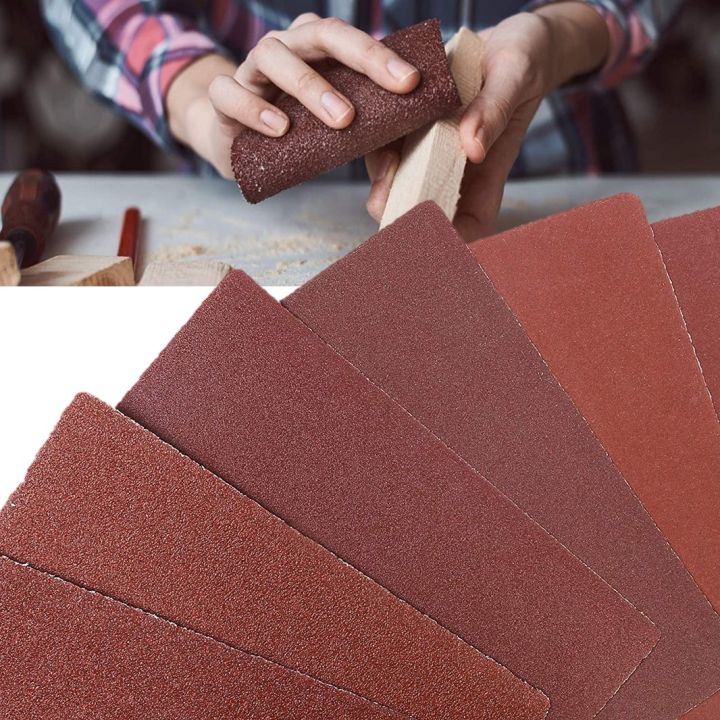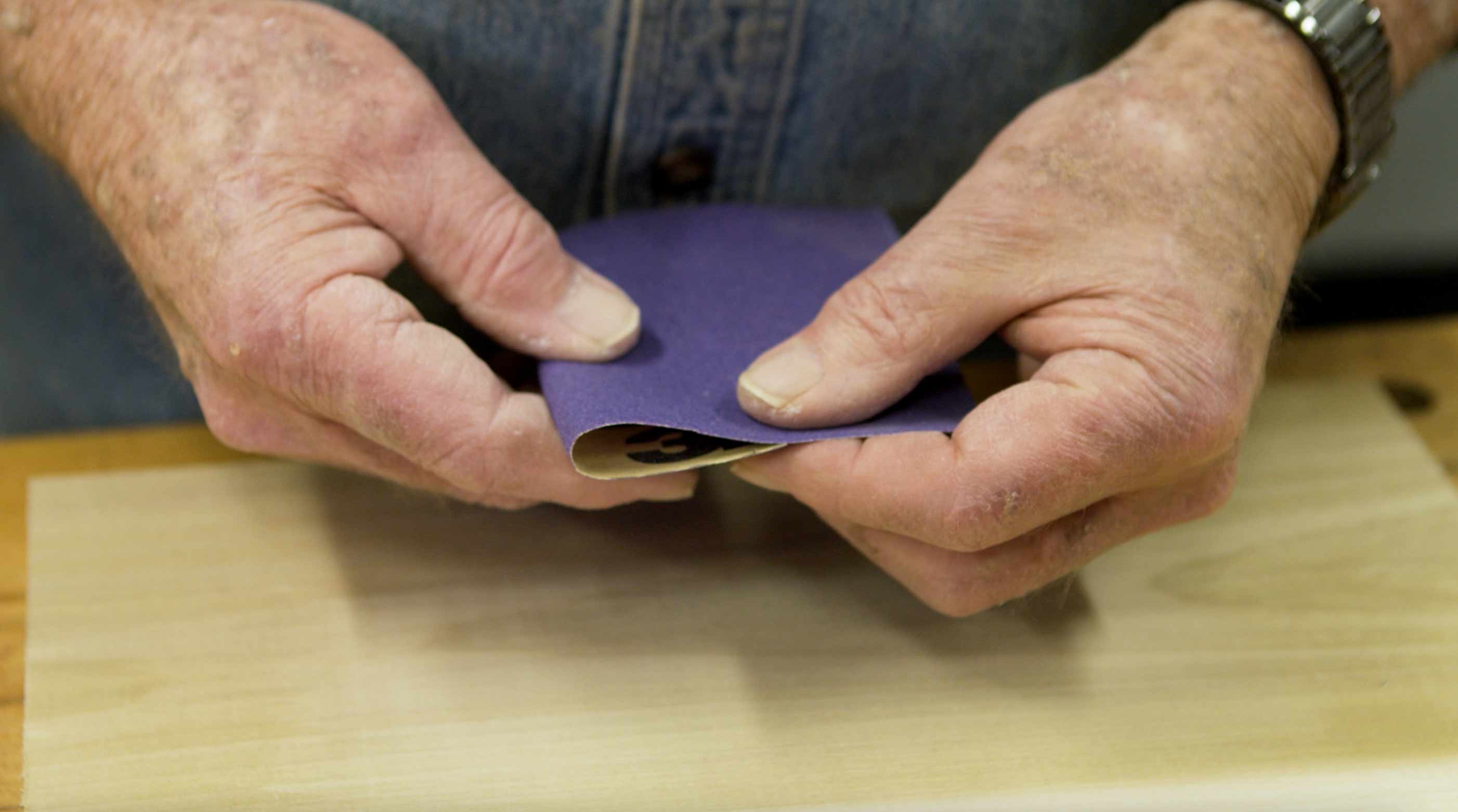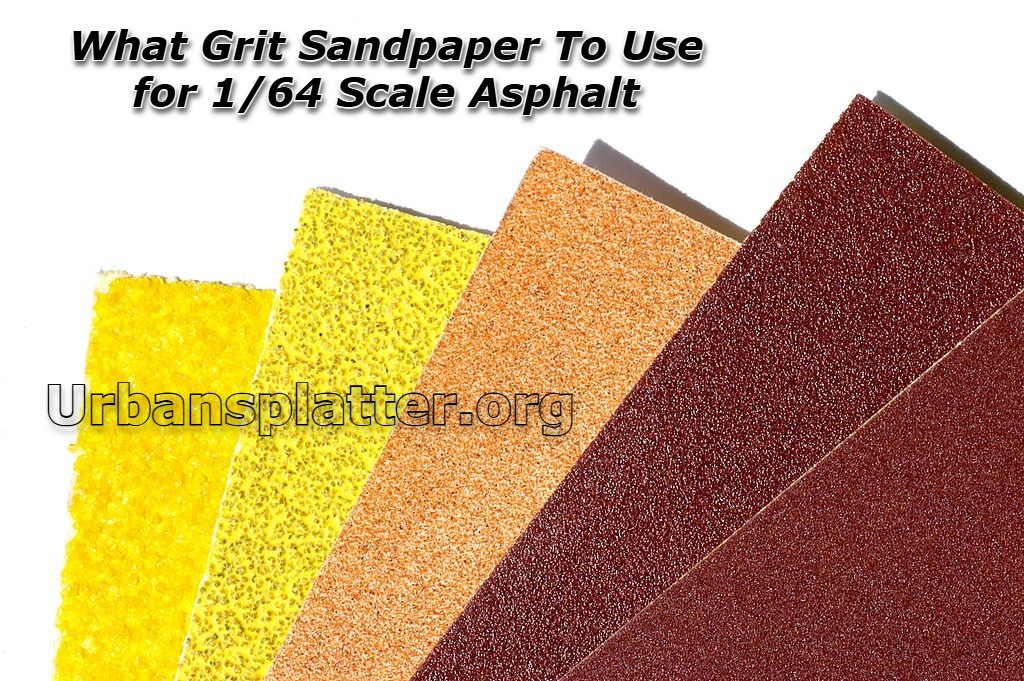As an artist working on 1/64 scale models, the perfect asphalt texture makes your model real. This means that the first thing in understanding what grit sandpaper to use for 1/64 scale asphalt will ensure you get the right texture and smoothness, bringing the asphalt on your model to life.
Understanding Grit and Its Importance for 1/64 Scale Asphalt
Grit is understood as being the size of the abrasive particles on sandpaper. Therefore, the lower the number, the grit is a lot coarser, and the higher it is, therefore very fine. On 1/64 scale asphalt models, the grit you choose will determine a lot about the texture and smoothness of the surface, hence choosing the correct one should be a determinant for such a detailed realistic finish.
Coarse grit helps produce a pretty coarse, rough texture while fine grit will allow a pretty highly smoothed polished asphalt look. Here’s a close examination of how the varied grits can be employed in helping you craft perfectly great asphalt textures for 1/64 scale models.
Basics About Scale Models
1/64 scale models are small replicas of real objects, often used for model cars and railway systems. The smaller the model, the more detail is required. For 1/64-scale asphalt, the right texture is achieved through precise sanding with the right grit.
Due to the small size of the models, the finish will require more fine-tuning. Either too rough or too smooth a finish could detract from the appearance or authenticity of the asphalt. That’s why what grit sandpaper to use for 1/64 scale asphalt is very crucial.
Coarse Grit Sandpaper: These would be used for really coarse textures.

To get the coarse, weathered asphalt look you want to start with the coarser grits of sandpaper. For those looking for that rough, more worn asphalt look, you will find a wide variety of grinds in 40 to 80 that help replicate older, extremely damaged roads.
- 40 Grit: This is actually great for the first stages of sanding to remove the bigger imperfections or to just create a rugged surface.
- 60 to 80 grit will make rough textures and small details on the asphalt.
Beware, however, when using these grits They can be too rough for small-scale models, and you might end up damaging the finer details of your model. So be gentle when using these grits.
Medium Grit Sandpaper for General Use
For a balance between smoothness and texture, 100 to 150-grit sandpaper provides a middle ground. General surface preparation is usually appropriate with these grits since they help remove imperfections while also keeping a realistic texture for the asphalt.
- 100 grit provides a general sanding where it gives a smoother texture while showing subtle roughness.
- 120 grit works well for finer details and smoothing out the coarse areas left by the more aggressive grits.
You want to use a middle grit when you do not want the asphalt to be too new or too old. They give you an average finish that’s quite useful for most asphalt on most 1/64 scale models.
Fine Grit Sandpaper to Smoothen Asphalt
If you are working with asphalt and you want it to have that fresh-laid appearance or make smooth surfaces, such as parking lots, then the finer grits of 180 to 400 will be your best bet. These will help you smoothen out the surface without losing that realistic texture asphalt naturally has.
- 180 grit is very good at smoothing a surface out a bit without losing that realistic appearance.
- 220 to 400 grit will polish the surface and result in a clean, almost glass-like finish that’s good for newly paved roads or race tracks.
Fine grit sandpaper can be used to achieve a perfect finish on your model; the shine will still leave a little roughness associated with asphalt.
Extra fine grit can give an ultra-smooth finish
If you want an ultra-smooth surface on your 1/64 scale asphalt, you can go even finer with 600 grit or higher. This will give you a perfectly polished surface with minimal texture, ideal for roads or parking lots that are newly built or well-maintained.
Extra-fine sandpaper helps achieve a flawless finish, which is great if you want your model to reflect the smoothness of fresh asphalt.
Wet vs. Dry Sandpaper

The wet sanding method can be used for finer grits. Wet sandpaper is used with water, and it does not clog and smooths out the surface very evenly.
The use of wet sanding with higher grit sandpaper (320 to 600 grit) is highly recommended in achieving smooth, flawless finishes for your 1/64 scale asphalt because it does not allow the buildup of dust and it lasts longer.
Step-by-Step Guide on Sanding 1/64 Scale Asphalt
Well, since you know already what grade of sanding paper is to be applied on your 1/64 scale asphalt, you can apply the following simplified step procedure:
- Clean-up your model: Ensure your model does not have dust sticking on its surface because that will be what scratches its surface in the middle of doing your work on it.
- Coarse Grit: 40 to 80 Grit removes large imperfections or smoothes out rough spots.
- Medium Grit: 100 or 120 Grit will start the surface texture refinement but it is still a very coarse feel.
- Fine Grit: 180 to 220 Grit smooths your surface.
- Finishing with extra-fine grit: The ultra-smooth areas end with 400 to 600 grit sandpaper.
- Wet sanding if required: Wet sanding uses finer grits to give a very smooth surface.
In this process, you will be able to obtain a very detailed and realistic asphalt surface finish for your 1/64 scale model.
Common mistakes while sanding your 1/64 scale asphalt
- Too coarse grit: Sandpaper of too coarse grit may damage the finer details of the model. Caution is advisable.
- Over-sanding: Over-sanding is one of the mistakes that makes the asphalt surface look too smooth and lose its texture as well. Always test on scrap materials before working on the main model with a new grit.
- Skippion finer grits: Skipping finer grits will leave your asphalt rough-looking and unfinished. Take your time to refine the surface for the best results.
Further tips on realistic asphalt

Make your asphalt look like the real thing through the following additional tips:
Add weathering effects. Use weathering powders or washes to apply an aged and weathered look to your asphalt.
Matte finish. Applying a matte finish will ensure that your asphalt has an extremely realistic, non-glossy look that most real roads possess.
Detailing. Add small cracks, potholes, or tire marks to give your asphalt surface a bit of realism.
How sandpaper affects the realism of your model
The grit of the sandpaper directly affects the realism of your 1/64-scale asphalt. Coarse sandpapers create rough, weathered textures, while fine sandpapers produce smooth, new asphalt looks. It’s a matter of what effect you want and, with a little experimentation, you can get just what you are looking for.
Conclusion
In conclusion, it is important to know which grit sandpaper to use when creating 1/64 scale asphalt to achieve the right finish on your models. Whether you are creating a rough, weathered look or a smooth, newly paved road, getting the right grit of sandpaper is crucial in creating realistic and detailed miniature asphalt. You will be ready to turn these 1/64th scale models into pieces that should knock your socks off, following the steps laid out here and practicing all of the grits.
FAQs:
1. What grit sandpaper should I use for 1/64 scale asphalt?
Start with coarse 40-80 grit for rough textures, then move to medium (100-120 grit) and fine grits (180-400 grit) for smoother finishes.
2. Can I use wet sandpaper for 1/64 scale models?
Wet sandpaper is perfect for finer grits (320-600 grit) and helps prevent clogging while smoothing the surface.
3. How do I avoid damaging my model while sanding?
Start with a lower grit and gradually get to finer grits. Always sand gently to avoid damaging delicate details.
4. Is sanding necessary for every asphalt model?
Not always, but sanding helps improve the texture and finish of the asphalt, especially if you’re working with rough or uneven surfaces.
5. How can I make my asphalt look more realistic?
To add authenticity to your model, use weathering powders, matte finishes, and small details like tire marks or cracks.















